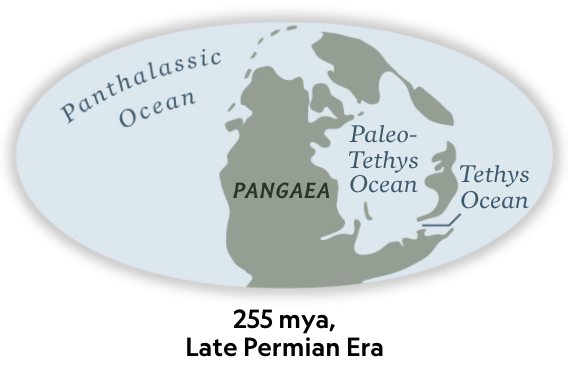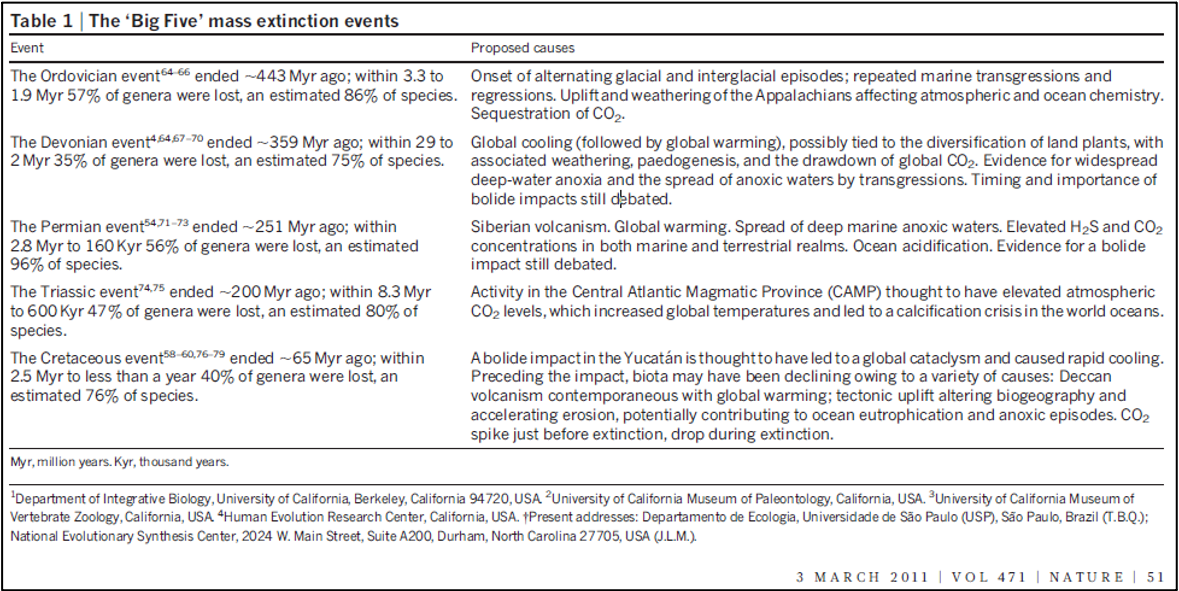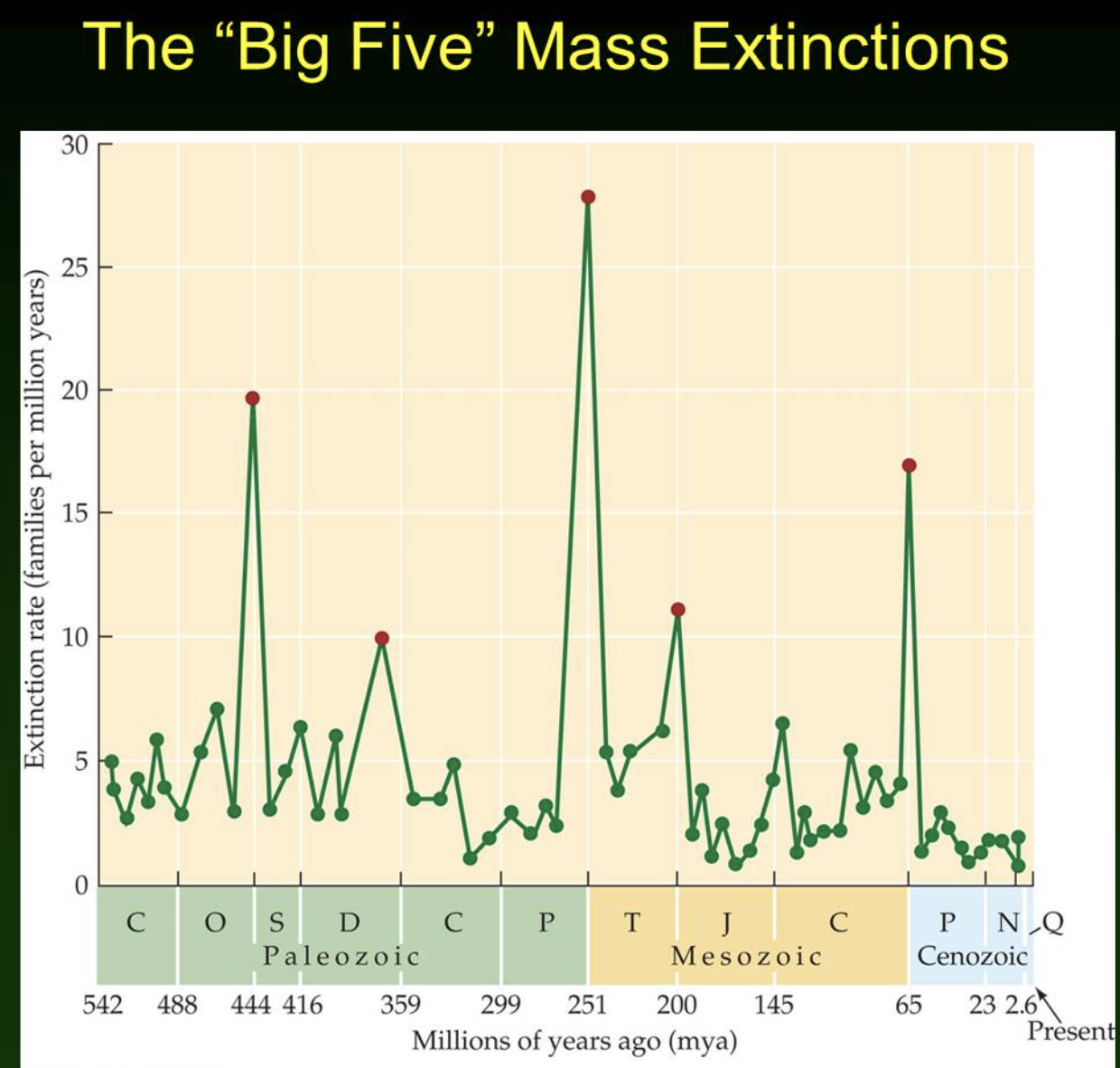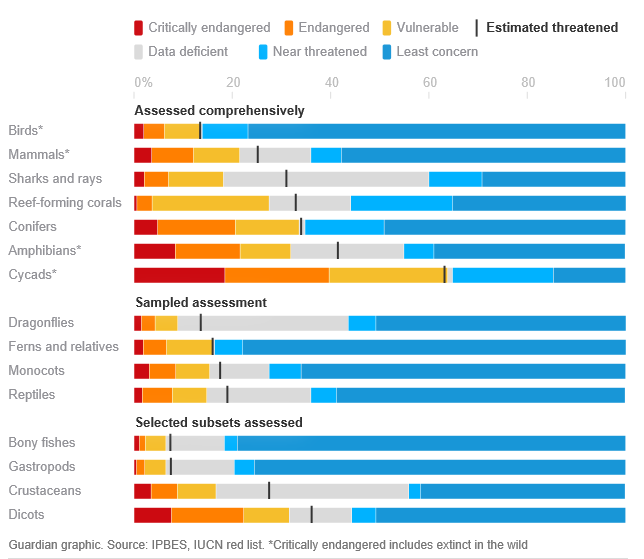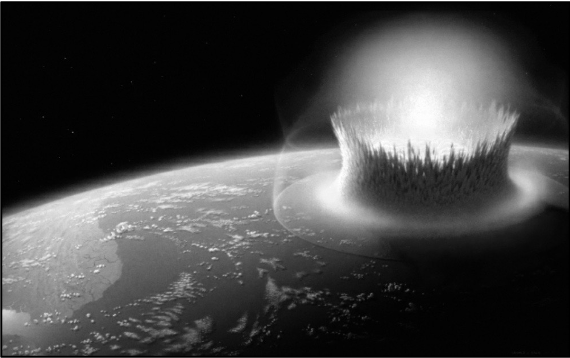The Sixth Extinction by Kolbert
Ref: Elizabeth Kolbert (2014). The Sixth Extinction: An Unnatural History. Henry Holt and Co.
____________________________________________________________________________
Summary
Having freed ourselves from the constraints of evolution, humans remain dependent on the earth's biological and geochemical systems. By disrupting these systems, cutting down tropical rainforests, altering the composition of the atmosphere, acidifying the oceans, we're putting our own survival in danger.
SINCE the start of the industrial revolution, humans have burned through enough fossil fuels—coal, oil, and natural gas—to add ~365B tons of C to the atmosphere. Deforestation has contributed another 180B tons. Each year, we throw up another 9B tons or so, an amount that’s been increasing by as much as 6% annually. As a result of all this, the concentration of CO2 in the air today ~400ppm—is higher than at any other point in the last 800K years. Quite probably it is higher than at any point in the last several million years. If current trends continue, CO2 concentrations will top 500ppm, roughly double the levels they were in pre industrial days, by 2050. It is expected that such an increase will produce an eventual average global temperature rise of 3.5-7 degrees F, and this will, in turn, trigger a variety of world-altering events, including the disappearance of most remaining glaciers, the inundation of low-lying islands and coastal cities, and the melting of the Arctic ice cap.
Mass Extinction: An extinction events that eliminate a significant proportion of the world’s biota in a geologically insignificant amount of time.
A hundred million years from now, all that we consider to be the great works of man, the sculptures and the libraries, the monuments and the museums, the cities and the factories, will be compressed into a layer of sediment not much thicker than a cigarette paper.
In its magnitude, the temperature change projected for the coming century is roughly the same as the temperature swings of the ice ages. (If current emissions trends continue, the Andes are expected to warm by as much as nine degrees.) But if the magnitude of the change is similar, the rate is not, and, once again, rate is key. Warming today is taking place ~10x faster than it did at the end of the last glaciation, and at the end of all those glaciations that preceded it. To survive, organisms must migrate, or adapt, at least 10x more quickly.
When you find one thing that depends on something else that, in turn, depends on something else, the whole series of interactions depends on constancy.
____________________________________________________________________________
Anthropocene
The correlation between the number of species in a given area is not linear. It’s a curve that slopes in a predictable way and is expressed as: S = cAz (S: # of species, A: area, c & z are constants that vary according to region and taxonomic group). One (simplified) way of conceiving of what humans are doing to the world is that we are everywhere changing the value of A.
Land Change
Human activity has transformed between a third and a half of the land surface of the planet.
Fertilizer plants produce more N than is fixed naturally by all terrestrial ecosystems.
~50M sqmi of land on the planet are ice-free, and this is the baseline that’s generally used for calculating human impacts. According to a recent study published by the Geological Society of America, people have “directly transformed” more than half of this land—roughly 27M sqmi—mostly by converting it to cropland and pasture, but also by building cities and shopping malls and reservoirs, and by logging and mining and quarrying. Of the remaining 23M sqmi, about 3/5 is covered by forest.
The world is changing in ways that compel species to move, and another is that it's changing in ways that create barriers, roads, clear-cuts, cities, that prevent them from doing so.
Freshwater Change
Most of the world’s major rivers have been dammed or diverted.
Humans use more than half of the world’s readily accessible freshwater runoff.
Due to Dams, some 39% of freshwater fish in North America and Europe are now considered imperiled.
Seawater Change
Fisheries remove more than a third of the primary production of the oceans’ coastal waters.
Due to CO2, the pH of the ocean's’ surface waters have already dropped, from an average of around 8.2 to an average of around 8.1. Like the Richter scale, the pH scale is logarithmic, so even such a small numerical difference represents a very large real-world change. A decline of .1 means that the oceans are now 30% more acidic than they were in 1800. Under “business as usual” emissions scenario, surface ocean pH will fall to 8.0 by 2050 and 7.8 by 2100. A 150% increase in acidity than they were at the start of the industrial revolution. The biggest tipping point, the one at which the ecosystem starts to crash, is a mean pH 7.8, which is what we’re expecting to happen by 2100.
Every year the oceans absorb 2.5B tons of C.
Coral cover in the Great Barrier Reef has declined by 50% just in the last 30y.
Atmospheric Change
Due to fossil fuel combustion and deforestation, the concentration of CO2 in the air has risen by 40% over the last two centuries, while the concentration of CH4 has doubled.
____________________________________________________________________________
Evolution
Allopatric Speciation: Biological Disparity transmuted from geological separation (or physical isolation).
Temperatures can vary significantly between the rainy and the dry seasons. Organisms have developed all sorts of ways of dealing with these variations. They hibernate or estivate or migrate. They dissipate heat through panting or conserve it by growing thicker coats of fur. Honeybees warm themselves by contracting the muscles in their thorax. Wood storks cool off by defecating on their own legs.
A theory of why the tropics are so diverse is that greater competition has pushed species to become more specialized, and more specialists can coexist in the same amount of space.
____________________________________________________________________________
Extinction
Alee Effect: Diminishing rates of a species survival due to diminishing population density.
Background Extinction Rate: Varies among organisms and expressed in extinctions per million species-years. For mammals ~.25 per million species-years.
____________________________________________________________________________
Coral Reefs
Corals: A polyp that hosts microscopic plants called zooxanthellae. The zooxanthellae produce carbs, via photosynthesis, which are harvested by the polyps and used to build calcific plates by joining calcium ions (Ca2+) and carbonate ions (CO32−) to form calcium carbonate (CaCO3). Corals like light light but can’t survive long exposure to the air, they tend to grow as high as the water level at low tide and then spread out laterally.
At the concentrations that they’re found in ordinary seawater, Ca and CO3 ions won’t combine. At the site of calcification, organisms must therefore alter the chemistry of the water to, in effect, impose a chemistry of their own. Ocean acidification increases the cost of calcification by reducing the number of CO3 ions available to begin with.
Corals grow fastest at an aragonite saturation state of five, slower at four, and still slower at three. At a level of two, they basically quit building. Prior to the industrial revolution, all of the world’s major reefs could be found in water with an aragonite saturation state between 4-5. Today, there’s almost no place left on the planet where the saturation state is above four, and if current emissions trends continue, by 2060 there will be no regions left above 3.5. By 2100, none will remain above three. As saturation levels fall, the energy required for calcification will increase, and calcification rates will decline. Eventually, saturation levels may drop so low that corals quit calcifying altogether, but long before that point, they will be in trouble. This is because out in the real world, reefs are constantly being eaten away at by fish and sea urchins and burrowing worms and being battered by waves and storms.
Coral Bleaching: Whitening of Coral Reefs due to the expulsion of zooxanthellae by polyps. Once water temperatures rise past a certain point—that temperature varies by location and species, the zooxanthellae begin to produce dangerous concentrations of O radicals, and the polyps respond, desperately and often self-defeatingly, by expelling them.
____________________________________________________________________________
Neanderthals
All non-Africans carry somewhere between 1-4% Neanderthal DNA.
From the archaeological record, it’s inferred that Neanderthals evolved in Europe or in W. Asia and dispersed from there, stopping when they reached water or some other significant obstacle. All that would have been required to do them in would have been a sustained downward pressure on the number of breeding adults.
____________________________________________________________________________
Misc Quotes
Such is the pain the loss of a single species causes that we’re willing to perform ultrasounds on rhinos and hand jobs on crows.
“It may be said that natural selection is daily and hourly scrutinizing, throughout the world, every variation, even the slightest; rejecting that which is bad, preserving and adding up all that is good; silently and insensibly working, whenever and wherever opportunity offers.”-Charles Darwin.
In general, apes seem to lack the impulse toward collective problem-solving that’s so central to human society.
The periodicity of comet showers may be explained by a small ‘companion star’ to the sun, which, every 26M years, passes through the Oort cloud, producing comet showers that can rain destruction on the earth.
It is generally believed that ice ages are initiated by small changes in the earth’s orbit, caused by, among other things, the gravitational tug of Jupiter and Saturn.
There are only about 10K species of birds in the entire world and only 5500 species of mammals.
____________________________________________________________________________
People
Charles Darwin (1809-1882): English Naturalist and the father of Evolutionary Theory.
Toward the end of the Beagle’s voyage, Darwin encountered coral reefs. These provided him with his first major breakthrough, a startling idea that would ease his entrée into London’s scientific circles. Darwin saw that the key to understanding coral reefs was the interplay between biology and geology. Darwin recognized that just as the features of the inorganic world—deltas, river valleys, mountain chains—were brought into being by gradual change, the organic world similarly was subject to constant flux. Ichthyosaurs and plesiosaurs, birds and fish and—most discomfiting of all—humans had come into being through a process of transformation that took place over countless generations. This process, though imperceptibly slow, was, according to Darwin, still very much going on; in biology, as in geology, the present was the key to the past.
At the heart of Darwin’s theory is “the denial of humanity’s special status.” And what was true of evolution should also hold for extinction, since according to Darwin, the latter was merely a side effect of the former. Species were annihilated, just as they were created, by “slow-acting and still existing causes,” which is to say, through competition and natural selection; to invoke any other mechanism was nothing more than mystification.
The more Darwin explored the world, the more Lyellian (constantly changing) it seemed to him to be. Without Lyell there would have been no Darwin.
Charles Lyell (1797-1875): Scottish Geologist who famously wrote “the present is the key to the past” in his book “Principles of Geology.”
Georges Cuvier (1769-1832): French Naturalist and discoverer of extinction; the founding father of paleontology.
____________________________________________________________________________
Terminology
Cretaceous- Tertiary Boundary (K-T): Marked by the extinction of the non-avian dinosaurs; the K is used as the abbreviation for Cretaceous because C was already taken by the Carboniferous; today, the border is formally known as the Cretaceous-Paleogene (K-Pg) boundary.
Kurupira: A mythical Amazonian monster with a boyish face, copious hair, and backward-pointing feet. He preys on poachers and anyone else who takes too much from the forest.
Paradigm Shifts: Great scientific discoveries discerned by scientific insight that replaces old frameworks of understanding with new ones (Kuhn).
____________________________________________________________________________
Chronology
1991: Rock Cores taken in the Yucatan are found to contain a layer of glass, rock that had melted, then rapidly cooled, right at the K-T boundary.-Sixth Extinction by Kolbert.
1984: Grains of shocked quartz are discovered in a layer of clay from the Cretaceous-Tertiary (K-T) boundary in E. Montana followed by signs of a massive tsunami in a TX end-Cretaceous sandstone with the subsequent discovery of a 100mile wide crater from gravity surveys taken by a Mexican Oil company in the 1950s beneath the Yucatan. The crater was buried under half a mile of newer sediment.-Sixth Extinction by Kolbert.
27 Dec, 1831- 2 Oct, 1836: The HMS Beagle captained by Robert FitzRoy sets sail for S. America with Charles Darwin as a gentlemen companion to survey the coast and resolve various mapping discrepancies that hindered navigation. The admiralty was particularly interested in finding the best approach to the Falkland Islands, which the British had recently assumed control of. The voyage went from Plymouth- Montevideo-Galapagos- Tahiti- New Zealand- Australia- Tasmania- Mauritius- and back to S. America.-Sixth Extinction by Kolbert.
1830: “The Principles of Geology” are published by Scottish Geologist Charles Lyell in which he famous posits “the Present is the key to the past”; every feature of the landscape was the result of very gradual processes operating over countless millennia—processes like sedimentation, erosion, and volcanism, which were all still readily observable.-Sixth Extinction by Kolbert.
40 Ka- Present: The Megafauna Extinction; most world megafauna species go extinct from human hunting.-Sixth Extinction by Kolbert.
~1750: The final pulse of the Megafauna Extinction; New Zealand’s Moa’s are wiped out.-Sixth Extinction by Kolbert.
~1500: The third pulse of the Megafauna Extinction; Madagascar’s Giant Lemurs, Pygmy Hippos, and Elephant Birds are wiped out.-Sixth Extinction by Kolbert.
15 Ka: The second pulse of the Megafauna Extinction; N. & S. American megafauna are wiped out.-Sixth Extinction by Kolbert.
40 Ka: The first pulse of the Megafauna Extinction; Australian megafauna are wiped out.-Sixth Extinction by Kolbert.
66 Ma: The Cretaceous Mass Extinction; a bolide from the SE, traveling at a low angle relative to Earth (like a plane losing altitude) strikes the Yucatan Peninsula at ~45K mph putting up a vast cloud of searing vapor and debris (including S which is rich in the Yucatan) that races over the American Continent, incinerating anything in its path. Ejecta falling back through the atmosphere incandesced, lighting the sky everywhere at once from directly overhead and generating enough heat to, in effect, broil the surface of the planet. Sulfate aerosols, which are particularly good at depressing global temperatures, remain aloft and lead to a multi-season ‘impact winter’ creating a ‘fern spike’ in which diverse plant communities were entirely replaced by ferns. Marine ecosystems effectively collapsed creating a ‘Strangelove Ocean’, and they remained in that state for at least half a million years. On land, every animal larger than a cat may have died. The non-avian dinosaurs, suffered a 100% loss.-Sixth Extinction by Kolbert.
201.5 Ma: The Triassic- Jurassic (aka End- Triassic) mass extinction eliminates ~76% of all marine and terrestrial species and about 20% of all taxonomic families. It’s thought to be the key moment that allowed dinosaurs to become the dominant land animals on Earth. The prevailing theory is that temperature increases of ~10-15C with corresponding ocean acidification resulted from the sudden release of large amounts of CO2, possibly during rifting of the Pangaea (Britannica).
252 Ma: The End Permian Mass Extinction eliminates ~99% of all species, possibly due to a massive burst of vulcanism in Modern Siberia, forming the ‘Siberian Traps.’ The associated massive release of C into the air causes temperatures to soar, warming the seas by as much as 18 degrees, acidifying the ocean water and drastically reducing the amount of dissolved O2, effectually suffocating sea life and collapsing reefs. According to the latest research, the whole episode lasted no more than 200K years (possibly <100K years).-The Sixth Extinction by Kolbert.
365 Ma: The Devonian Mass Extinction eliminates 70-80% of all animals species and ~20% of Devonian Animal families and severely impacts marine communities. The current theory is that extinction was caused by several stresses including sedimentation, rapid global warming or cooling, a bolide impact, or massive nutrient runoff from the continents (Britannica).
444 Ma: The Ordovician Mass Extinction wipes out ~80-85% of all species. Seen as the first of the big five mass extinctions, the current theory is that the extinction was caused by glaciation. For most of the period, a so-called greenhouse climate prevailed, CO2 levels in the air were high and so, too, were sea levels and temperatures. But right around the time of the first pulse (of two) of extinction, the one that wreaked havoc among the graptolites, CO2 levels dropped. Temperatures fell and Gondwana froze.-Sixth Extinction by Kolbert.
____________________________________________________________________________
